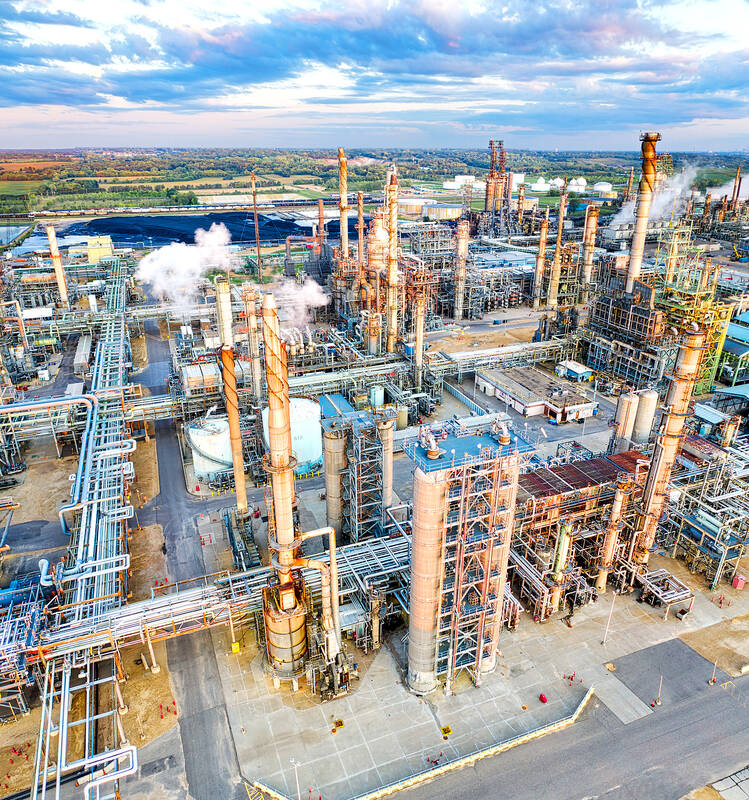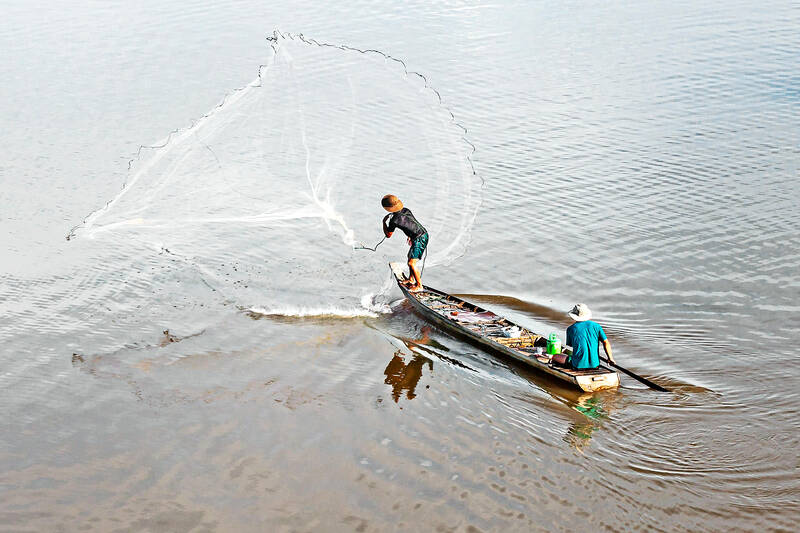When workers at a garment factory in Yangon, Myanmar, went on strike in February to protest starvation wages, their employer had the army called in.
“[It’s a] classic case of union-busting ... Military vehicles and police showed up to threaten them,” says Ray Cheng (鄭中睿), director of Youth Labor Union 95 (青年勞動九 五聯盟), a Taiwan-based labor rights group that exposes abuses by Taiwanese transnational corporations. “Then the company fired all 26 union members, claiming they’d skipped work [during the strike] and violated their contracts. It was outrageous”
The company in question is Taiwan-headquartered Pou Chen (寶成), the world’s largest manufacturer of branded athletic and casual footwear. The company has an ignominious history of rights violations in Southeast Asia. In 1997, reports of physical and sexual abuse at Pou Chen factories in Vietnam surfaced; in 2011, supervisors at a Pou Chen facility in Indonesia were caught assaulting their staff. Pou Chen dismissed the incidents as “isolated cases,” promising to improve training procedures.

Photo courtesy of Tom Fisk
The violations in Myanmar suggest little has changed. By establishing facilities in a country where labor rights oversights are practically nonexistent and independent unions have been outlawed following a military coup in 2021, Pou Chen has made little progress when it comes to labor rights.
The corporation is far from anomalous among Taiwanese manufacturers, as Cheng made clear at a recent labor rights conference.
Another company with a questionable rights record is Nien Hsing Textile Co (年興紡織), the world’s sixth-largest denim fabric producer, and a supplier for major brands such as Levi Strauss & Co. A 2019 report by the Workers Rights Consortium (WRC) — a US-based NGO that monitors labor rights in the garment industry — uncovered systemic gender-based sexual harassment and violence by supervisors at the company’s factories in Lesotho.

Photo courtesy of Van Long Bui
With employees distrustful of Nien Hsing’s internal resolution mechanisms based on previous failures and the company’s attempts to limit freedom of association, union activists and women’s rights groups took their grievances directly to the brands for whom Nien Hsing contracts. Historically such approaches had not enjoyed much success because of the “pricing power” of the manufacturers, says Cheng.
“When they don’t comply, the brands can’t do much because they can’t find anyone else to take up 60-plus percent of their supply,” says Cheng.
BRAND AWARENESS
However, there are signs that the brands are accepting responsibility for ensuring all elements of their supply chains are following environmental, social and corporate governance (ESG) regulations.
In the Nien Hsing case, unions and rights groups in Lesotho signed individual agreements with each brand, compelling them to reduce orders from the Taiwanese supplier in cases of the latter’s non-compliance.
Separate accords were inked with Nien Hsing itself, and the WRC and other US-based NGOs were also signatories to the agreements, which are now enforceable in US courts.
As an executive committee member of the Clean Clothes Movement East Asia Coalition, Cheng focused on Taiwan’s garment manufacturers during his presentation at the conference, which was organized by Taiwan Transnational Corporations Watch (TTNC Watch, 台灣跨國企業監察), a Taiwan-based coalition of seven groups advocating for human rights, labor rights, and environmental protection.
Another by Chang Yu-yin (張譽尹) spotlighted Formosa Plastics Group (FPG, 台塑集團), whose diverse operations include biotech, petrochemicals and electronic components production.
Chang, an attorney and executive director of the Environmental Jurists Association (環境法律人協會), expressed concern for the well-being of veteran activist Diane Wilson who has been on hunger strike since Oct. 31 to protest FPG transgressions in Vietnam and the US.
“She is becoming weak,” said Chang, whose Taiwan-based NGO comprises lawyers and scholars with expertise on environmental issues. “But Formosa has not responded.”
JUSTICE FOR ALL
Wilson’s action was initiated outside the FPG’s factory at Point Comfort, Texas to protest inadequate compensation for fishing communities in Vietnam that were devastated by toxic effluence from plants run by FPG subsidiary Formosa Ha Tinh Steel Corp in Vietnam’s Vung Ang Economic Zone in 2016.
She also cited the Point Comfort facility’s continued flouting of a “zero discharge” order as a motivation for her action.
The discharge condition was part of a US$50-million settlement — a record payout for a civil suit in the United States under the federal Clean Water Act — imposed on FPG in 2020 for plastic pollution of coastal waterways in Texas. At a congressional briefing in Washington, DC in September, Wilson noted that FPG had violated the order more than 500 times since the ruling, resulting in further fines of US$12.8 million.
“Our intent is to bring justice to the Vietnamese fishermen, and our petition in front of Formosa Plastics, Texas is to do just that,” Wilson told attendees at the briefing. “The Vietnamese fishermen deserve justice no less than the Texas fishermen did.”
In an e-mailed response to inquiries about the case, a spokesperson from Formosa Plastics Corporation, U.S.A. expressed “gratitude” for media interest in the case.
“Your coverage plays a vital role in raising awareness and holding us accountable for ensuring the safety of our environment,” wrote Mark A. Walker, a representative of the corporate communications department.
CAMPAIGN OF INTIMIDATION
Meanwhile, attempts to have the violations in Vietnam brought before Taiwan’s courts had seemed futile, before a milestone ruling by Taiwan’s Supreme Court in 2020. This overturned a High Court decision to dismiss the case for lack of jurisdiction.
However, Chang stressed that the process remained an uphill struggle, partly because of issues with lawyers gaining unfettered access to the Vietnamese plaintiffs and their advocates, who face persecution by the Vietnamese authorities, including lengthy incarceration and severe beatings.
“In some cases, it has been almost impossible for the Vietnamese plaintiffs to meet Taiwanese lawyers,” said Chang. “To do so, they would have to notify the local authorities, and that is basically like sending the victims to their oppressors.”

That US assistance was a model for Taiwan’s spectacular development success was early recognized by policymakers and analysts. In a report to the US Congress for the fiscal year 1962, former President John F. Kennedy noted Taiwan’s “rapid economic growth,” was “producing a substantial net gain in living.” Kennedy had a stake in Taiwan’s achievements and the US’ official development assistance (ODA) in general: In September 1961, his entreaty to make the 1960s a “decade of development,” and an accompanying proposal for dedicated legislation to this end, had been formalized by congressional passage of the Foreign Assistance Act. Two

March 31 to April 6 On May 13, 1950, National Taiwan University Hospital otolaryngologist Su You-peng (蘇友鵬) was summoned to the director’s office. He thought someone had complained about him practicing the violin at night, but when he entered the room, he knew something was terribly wrong. He saw several burly men who appeared to be government secret agents, and three other resident doctors: internist Hsu Chiang (許強), dermatologist Hu Pao-chen (胡寶珍) and ophthalmologist Hu Hsin-lin (胡鑫麟). They were handcuffed, herded onto two jeeps and taken to the Secrecy Bureau (保密局) for questioning. Su was still in his doctor’s robes at

Last week the Democratic Progressive Party (DPP) said that the budget cuts voted for by the China-aligned parties in the legislature, are intended to force the DPP to hike electricity rates. The public would then blame it for the rate hike. It’s fairly clear that the first part of that is correct. Slashing the budget of state-run Taiwan Power Co (Taipower, 台電) is a move intended to cause discontent with the DPP when electricity rates go up. Taipower’s debt, NT$422.9 billion (US$12.78 billion), is one of the numerous permanent crises created by the nation’s construction-industrial state and the developmentalist mentality it

Experts say that the devastating earthquake in Myanmar on Friday was likely the strongest to hit the country in decades, with disaster modeling suggesting thousands could be dead. Automatic assessments from the US Geological Survey (USGS) said the shallow 7.7-magnitude quake northwest of the central Myanmar city of Sagaing triggered a red alert for shaking-related fatalities and economic losses. “High casualties and extensive damage are probable and the disaster is likely widespread,” it said, locating the epicentre near the central Myanmar city of Mandalay, home to more than a million people. Myanmar’s ruling junta said on Saturday morning that the number killed had